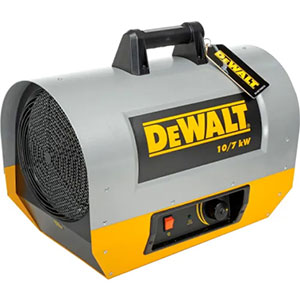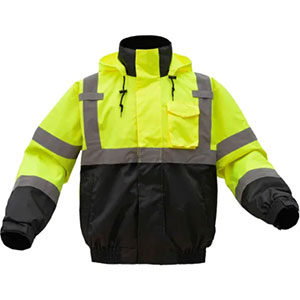Key Takeaways
- Winter HVAC maintenance is critical for efficiency and reliability.
- Regular heater maintenance tips include cleaning coils, testing airflow, and checking filters.
- Air curtain installation at loading docks prevents major heat loss.
- Smart thermostat for winter setups saves energy and improves comfort.
- Portable heaters, PPE, and heated break areas keep workers safe and warm.
Have you thought about your HVAC lately? As much as we rely on our HVAC systems throughout the year, it can be easy to put them in the category of ‘set it and forget it.’ But with the approach of winter, keeping workers and equipment warm is a central focus. This is where an ounce of prevention is worth a pound of cure. Instead of waiting for the temperatures to drop, take maintenance and preparatory steps now. By thinking ahead, you can ensure that when you flip the switch, the heat comes on and stays on.
Why Prepare Your Facility for Winter Now?
Cold weather presents unique issues. When temperatures drop, your facility faces three big challenges: keeping employees comfortable, protecting equipment, and preventing energy waste. If you wait until the first cold day to power on the heat, you could end up with an underperforming HVAC system, drafty workspaces, and frustrated workers. Winter HVAC maintenance is essential. By inspecting, servicing, and sealing your building early, you’ll:
- Avoid costly breakdowns.
- Improve heating efficiency.
- Keep warm air where it belongs.
- Protect equipment and sensitive inventory.
In this guide, we walk through some practical HVAC tips for winter including sealing strategies and ways to keep workers warm and safe.
What Should You Check Before Winter Hits?
Inspect the Facility
Start with a walkthrough in which you
- Identify drafty spots or cold zones.
- Check new equipment or workstations that may be vulnerable to the cold.
- Look for gaps around windows, doors, or roofing.
- Ask employees for feedback on last year’s cold spots.
Many inspections lead you right to the loading dock, a major source of heat loss. Plan to address it with sealing, insulation, or air curtain installation.
Ask Your Team
Your workers spend all day in the space. They know where the cold settles. Ask them a few basic questions:
- Which areas were hardest to stay warm in last winter?
- Which doors or docks created the worst drafts?
- What changes would help them stay comfortable this season?
How Do You Maintain Heating and HVAC Systems?
Your HVAC system is the core of your winter preparation. Without proper upkeep, efficiency plummets, bills spike, and systems are more likely to fail under heavy demand. The solution: follow a seasonal checklist for winter HVAC maintenance.
HVAC Tips for Winter: A Checklist
- Clean or replace air filters monthly.
- Move obstructions away from vents and returns.
- Perform HVAC airflow testing to ensure heat reaches all zones.
- Clean blower fans and compressors.
- Check ductwork for leaks.
- Cycle dampers to confirm smooth operation.
- Inspect the furnace for ignition and burner efficiency.
- Reset and calibrate thermostats.
Heater Maintenance Tips
In addition to HVAC, check:
- Hydraulic equipment – Cold weather stiffens fluids, slowing performance.
- Batteries – Cold temperatures reduce efficiency; keep spares charged in heated spaces.
- Seals – Inspect for cracking or damage in freezing conditions.
Regular checks ensure your facility doesn’t grind to a halt when temperatures dip.
Coil Cleaning for Better Performance
Dirty coils are a leading cause of HVAC inefficiency. Clean coils improve airflow, reduce strain on your system, and keep heating reliable. For proper upkeep:
- Use the best AC coil cleaner suited for your system.
- Apply a coil cleaner for HVAC units at the start of winter.
- Choose an HVAC coil cleaning solution recommended by your supplier to break down dirt and debris.
How Can You Stop Air Leaks?
Heating is only as effective as your building’s insulation and sealing. Essentially, any opening allows precious heat to escape. Take a good look at your layout and use some preventative solutions in these different openings:
Loading Docks
- Weather-strip dock doors to reduce drafts.
- Add dock shelters or seals.
- Invest in air curtain installation to create an invisible barrier between indoor warmth and outdoor cold.
Doors and Windows
- Replace worn seals.
- Caulk gaps and cracks around frames.
- Inspect for warping that may allow air infiltration.
Safety Around Entry Points
In addition to heat escaping, cold weather brings ice and snow hazards. Making sure your employees and customers have sure footing is an essential safety precaution. Prevent accidents with:
- Salt, de-icer, and shovels in stock.
- Anti-slip mats or coatings in high-traffic areas.
How Can Thermostats and Zoning Save Energy?
Let’s talk about heat control. While focusing on sealing leaks is important, you can also use the ‘brains’ of your system to control the output of heat to different areas. The thermostat system you choose should be custom-fitted for your space.
Programmable and Smart Thermostats
A smart thermostat for winter setups allows you to:
- Preheat workspaces before shifts.
- Lower temps in unused areas.
- Adjust settings remotely for quick weather changes.
Zoning Systems
Get specific. Divide the building into zones to:
- Keep production floors warmer for employees.
- Reduce heat in storage areas.
- Cut energy waste.
When combined with winter HVAC maintenance, zoning helps balance comfort and efficiency.
How Do You Keep Workers Comfortable in Cold Weather?
Even with the best HVAC prep, some areas will still be chilly. Protecting employees is just as important as protecting equipment. There are some smaller ways to make sure your team is safe and comfortable:
Even with the best HVAC prep, some areas will still be chilly. Protecting employees is just as important as protecting equipment. There are some smaller ways to make sure your team is safe and comfortable:
Portable Heaters
- Electric space heaters for offices and enclosed areas.
- Infrared heaters for targeted warmth in drafty spaces.
- Propane or gas heaters for large, ventilated areas.
Note: it is crucial to follow safety rules. Keep heaters clear of flammable items and use ventilation for fuel-burning models.
Winter Gear and PPE
Providing cold-weather gear as part of personal protective equipment (PPE) ensures employee safety:
- Insulated jackets, gloves, and hats.
- Thermal liners or heated clothing.
- Non-slip, insulated boots for icy surfaces.
Warm Break Areas
Establish heated zones where workers can warm up:
- Break rooms with portable heaters.
- Enclosed warming shelters near unheated zones.
- Infrared heating stations in dock areas.
Frequently Asked Questions (FAQs)?
Why is winter HVAC maintenance so important?
Because systems work harder in the cold. Without maintenance, you risk breakdowns, uneven heating, and higher energy costs.
What are the top heater maintenance tips?
Check filters, test airflow, clean coils, and inspect furnaces. Always service equipment before the first freeze.
How does coil cleaning help HVAC performance?
Clean coils improve efficiency and airflow. Using the best AC coil cleaner or an approved HVAC coil cleaning solution reduces dirt buildup and keeps heating consistent.
What’s the role of air curtains installation?
Air curtains create a protective barrier at doors and docks, blocking cold air while allowing workers and equipment to move freely.
How does a smart thermostat for winter improve efficiency?
It lets you program heating schedules, lower temps in unused spaces, and monitor usage remotely for energy savings.
Winter prep goes beyond just flipping the heat on. With winter HVAC maintenance, your facility can stay warm, efficient, and safe.
Key steps include:
- Inspecting facilities and asking employees for feedback.
- Following HVAC tips for winter, including airflow testing and coil cleaning.
- Installing air curtains and sealing leaks.
- Using smart thermostats and zoning systems.
- Storage and shelving
- Providing portable heaters, gear, and warm break areas for employees.
By acting early, you’ll protect your equipment, maintain productivity, and keep your workforce safe all season long. As always, Global Industrial is your hub for heater and HVAC solutions.
The information contained in this article is for informational, educational, and promotional purposes only and is based on information available as of the initial date of publication. It is the reader’s responsibility to ensure compliance with all applicable laws, rules, codes, and regulations. If there is any question or doubt in regard to any element contained in this article, please consult a licensed professional. Under no circumstances will Global Industrial® be liable for any loss or damage caused by your reliance on this article.

